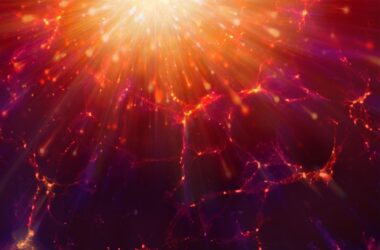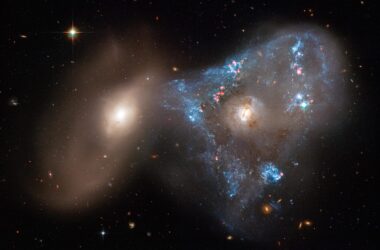Des astronomes de l’Université de Durham, en collaboration avec une équipe de scientifiques internationaux, ont cartographié plus d’un quart du ciel septentrional à l’aide du LOFAR (Low-Frequency Array), un radiotélescope paneuropéen.
La carte révèle une image radio étonnamment détaillée de plus de 4,4 millions d’objets et une image très dynamique de notre Univers, qui a été rendue publique pour la première fois.
La grande majorité de ces objets se trouvent à des milliards d’années-lumière et sont soit des galaxies qui abritent des trous noirs massifs, soit de nouvelles étoiles en pleine croissance. Parmi les objets plus rares qui ont été découverts, on trouve des groupes de galaxies lointaines qui entrent en collision et des étoiles qui s’enflamment au sein de la Milky Way.
To produce the map, scientists deployed state-of-the-art data processing algorithms on high-performance computers all over Europe to process 3,500 hours of observations that occupy 8 petabytes of disk space — the equivalent to roughly 20,000 laptops.

A composition radio (LoTSS-DR2) and optical (Hubble space telescope) image of the “jellyfish galaxy” NGC 4858 which is flying through a dense medium that is stripping material from the galaxy. Credit: Ian Roberts
This data release, which is by far the largest from the LOFAR Two-metre Sky Survey, presents about a million objects that have never been seen before with any telescope and almost four million objects that are new discoveries at radio wavelengths.
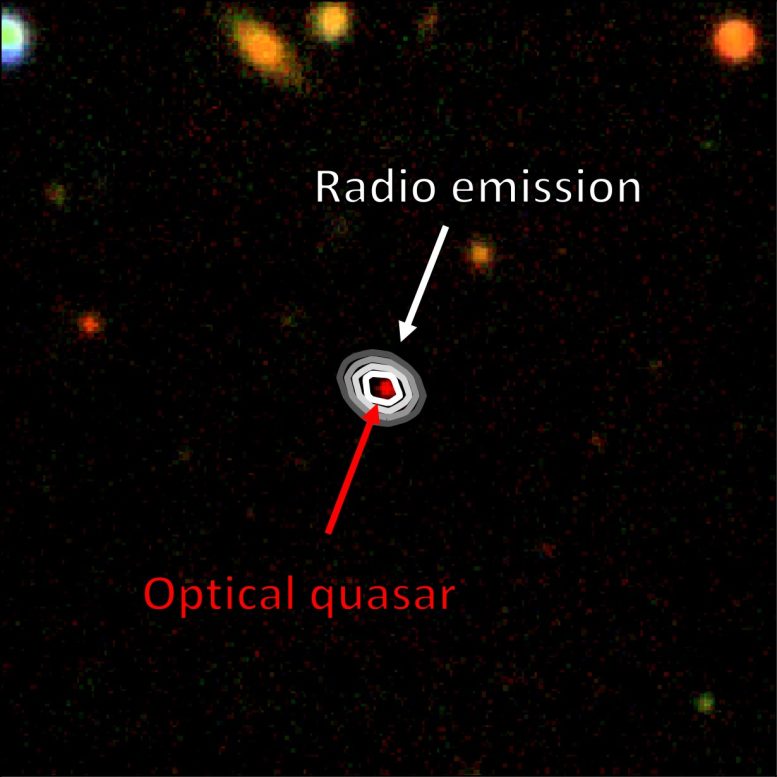
This innocuous looking red quasar is one of the most powerful objects in the early Universe and was formed within 1 billion years of the Big Bang. Here we see the quasar as it looked 12.9 billion years ago when its central black hole was rapidly accreting material and creating powerful outbursts that glow at radio wavelengths. We do not yet fully understand how such powerful sources formed so soon after the Big Bang. Credit: Anniek Gloudemans
Astronomer Timothy Shimwell of ASTRON and Leiden University, said: “This project is so exciting to work on. Each time we create a map our screens are filled with new discoveries and objects that have never before been seen by human eyes. Exploring the unfamiliar phenomena that glow in the energetic radio Universe is such an incredible experience and our team is thrilled to be able to release these maps publicly. This release is only 27% of the entire survey and we anticipate it will lead to many more scientific breakthroughs in the future, including examining how the largest structures in the Universe grow, how black holes form and evolve, the physics governing the formation of stars in distant galaxies and even detailing the most spectacular phases in the life of stars in our own Galaxy.”
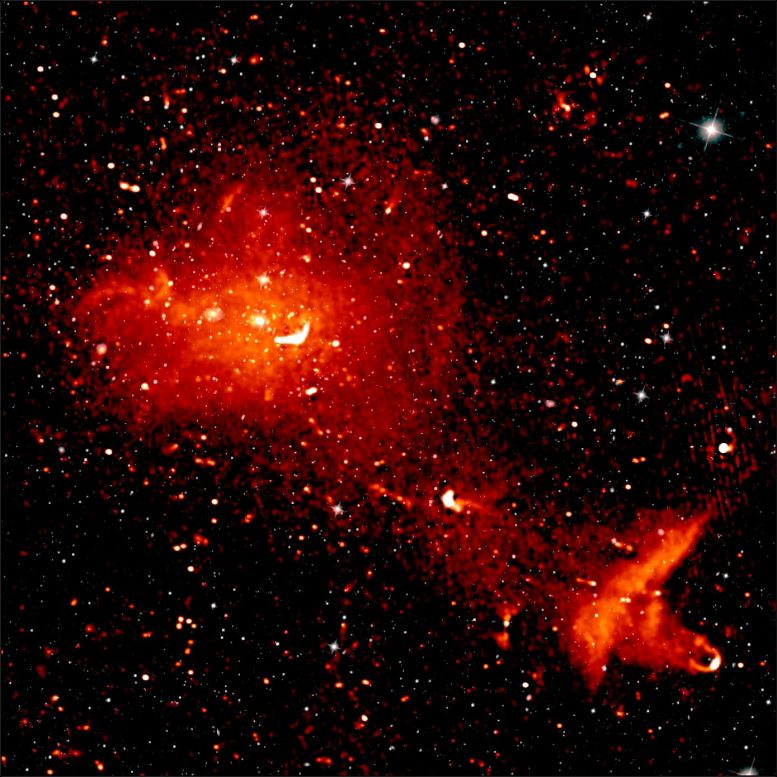
A composite radio (LoTSS; red) and infrared (WISE; white) image of the Coma cluster which is over 300 million light years from Earth and consists of over 1,000 individual galaxies. The radio image shows radiation from highly energetic particles that pervade the space between the galaxies. Credit: Annalisa Bonafede
Durham University scientist, Dr. Leah Morabito, said: “We’ve opened the door to new discoveries with this project, and future work will follow up these new discoveries in even more detail with techniques, which we work on here at Durham as part of the LOFAR-UK collaboration, to post-process the data with 20 times better resolution.”
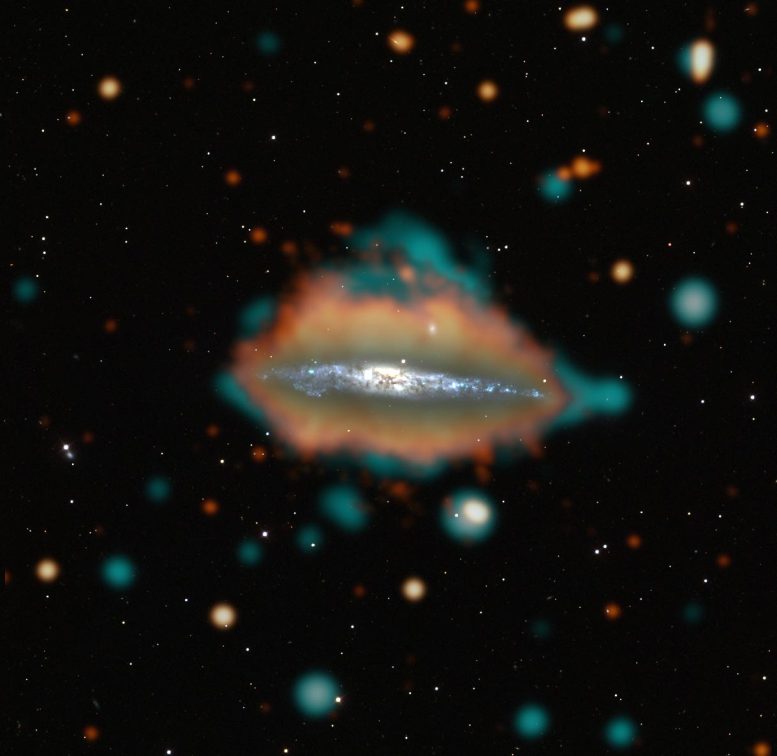
Radio, X-ray, and optical composite image of the “Whale Galaxy” NGC 4631. In this galaxy star-formation produces hot gas that is visible in X-ray (blue) as well as highly energetic particles that spiral in the galaxy’s magnetic field that are visible in the LoTSS radio image (orange). The high levels of star formation are possibly triggered by an interaction with a companion galaxy. Credit: Volker Heesen & Michael Stein
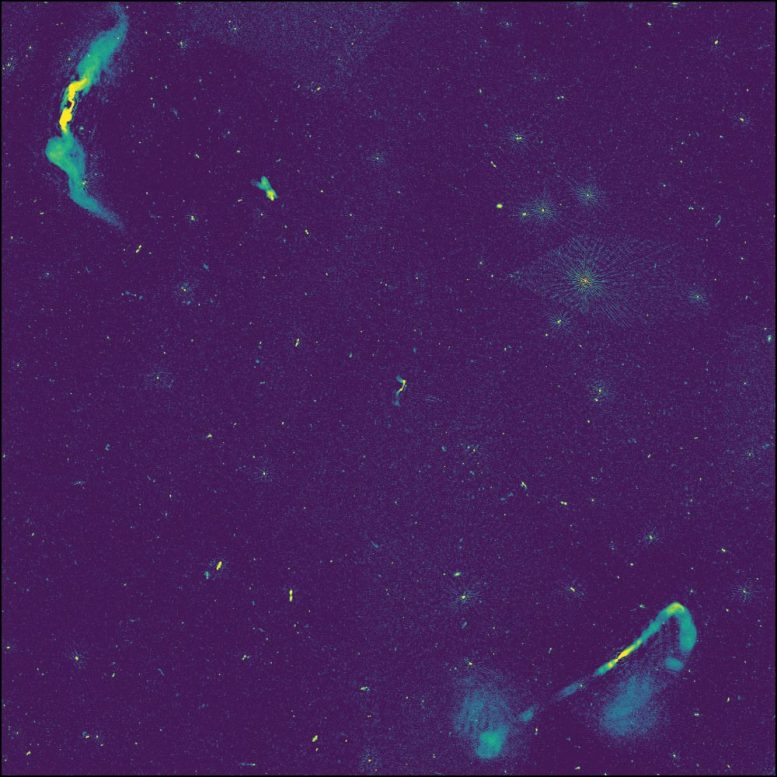
This image shows the dynamic highly energetic radio wavelength Universe. It is a 9 square degree cutout image of LoTSS-DR2 showing a region dominated by the radio galaxies NGC 315 and NGC 383 but containing about 7,000 other astronomical sources of radio radiation. The image covers an area that is 45 times larger than that of the full moon but corresponds to only 1.5% of the total amount of data released in LoTSS-DR2. Essentially all the objects that are visible lie in the distant Universe and are powerful, explosive phenomena such as jets of radiation from supermassive black holes and galaxies where stars are rapidly forming. Credit: Timothy Shimwell

Each panel in this high resolution montage shows radio wavelength radiation produced when two giant clusters of 100s to 1000s of galaxies collide. These rare events are the most energetic since the big bang and produce gigantic shock waves and turbulence spanning millions of light years. The LoTSS-DR2 cluster survey has studied 309 galaxy clusters in the largest study of its kind and furthered our understanding of these highly energetic processes. Credit: Andrea Botteon
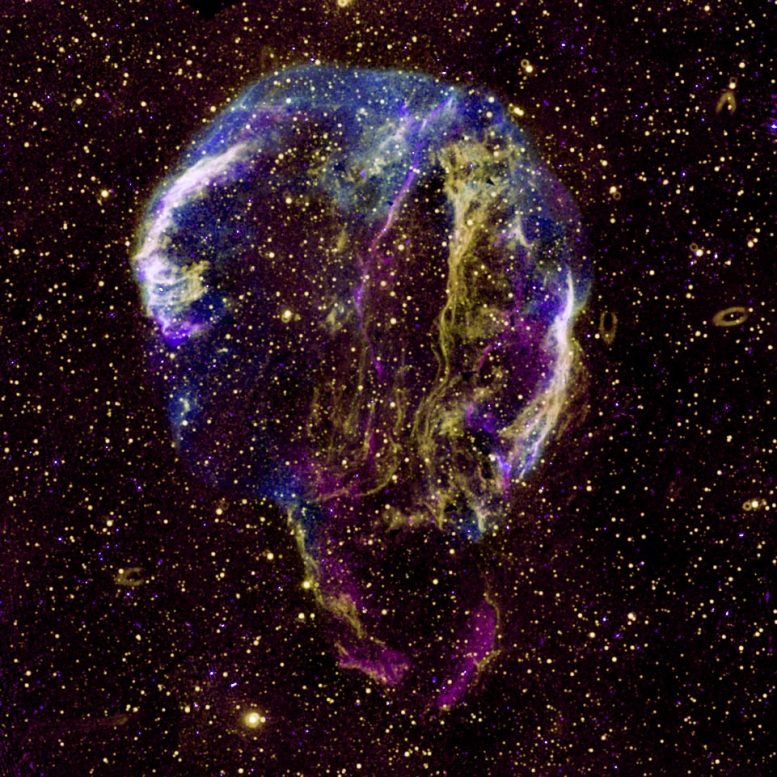
A composition radio (LoTSS; purple), UV (GALEX; yellow) and X-ray (ROSAT; blue) image of the Cygnus loop supernova remnant. This spectacular structure in the Milky Way is something to look forward to in future LoTSS data releases as the survey is now beginning to explore our Galaxy. Credit” Jennifer West
This data presents a major step forward in astrophysics and can be used to search for a wide range of signals, such as those from nearby planets or galaxies right through to faint signatures in the distant Universe.
Chaque point de cette animation indique l’emplacement d’un objet extrêmement énergétique dans notre Univers. Il s’agit de trous noirs, de galaxies avec des explosions de formation d’étoiles et d’événements de fusion explosive entre certains des plus grands groupes de galaxies de l’Univers. L’animation montre la vue la plus détaillée jamais réalisée de notre univers radio, telle que révélée par LOFAR. Crédit : Frits Sweijen
Référence : “The LOFAR Two-metre Sky Survey – V. Second data release” par T. W. Shimwell, M. J. Hardcastle, C. Tasse, P. N. Best, H. J. A. Röttgering, W. L. Williams, A. Botteon, A. Drabent, A. Mechev, A.. Shulevski, R. J. van Weeren, L. Bester, M. Brüggen, G. Brunetti, J. R. Callingham, K. T. Chyzy, J. E. Conway, T. J. Dijkema, K. Duncan, F. de Gasperin, C. L. Hale, M. Haverkorn, B. Hugo, N. Jackson, M. Mevius, G. K. Miley, L. K. Morabito, R. Morganti, A. Offringa, J. B. R. Oonk, D. Rafferty, J. Sabater, D. J. B. Smith, D. J. Schwarz, O. Smirnov, S. P. O’Sullivan, H. Vedantham, G. J. White, J. G. Albert, L. Alegre, B. Asabere, D. J. Bacon, A. Bonafede, E. Bonnassieux, M. Brienza, M. Bilicki, M. Bonato, G. Calistro Rivera, R. Cassano, R. Cochrane, J. H. Croston, V. Cuciti, D. Dallacasa, A. Danezi, R. J. Dettmar, G. Di Gennaro, H. W. Edler, T. A. Enßlin, K. L. Emig, T. M. O. Franzen, C. García-Vergara, Y. G. Grange, G. Gürkan, M. Hajduk, G. Heald, V. Heesen, D. N. Hoang, M. Hoeft, C. Horellou, M. Iacobelli, M. Jamrozy, V. Jelic, R. Kondapally, P. Kukreti, M. Kunert-Bajraszewska, M. Magliocchetti, V. Mahatma, K. Malek, S. Mandal, F. Massaro, Z. Meyer-Zhao, B. Mingo, R. I. J. Mostert, D. G. Nair, S. J. Nakoneczny, B. Nikiel-Wroczynski, E. Orrú, U. Pajdosz-Smierciak, T. Pasini, I. Prandoni, H. E. van Piggelen, K. Rajpurohit, E. Retana-Montenegro, C. J. Riseley, A. Rowlinson, A. Saxena, C. Schrijvers, F. Sweijen, T. M. Siewert, R. Timmerman, M. Vaccari, J. Vink, J. L. West, A. Wolowska, X. Zhang et J. Zheng, 25 février 2022, Astronomie et astrophysique.
DOI: 10.1051/0004-6361/202142484

